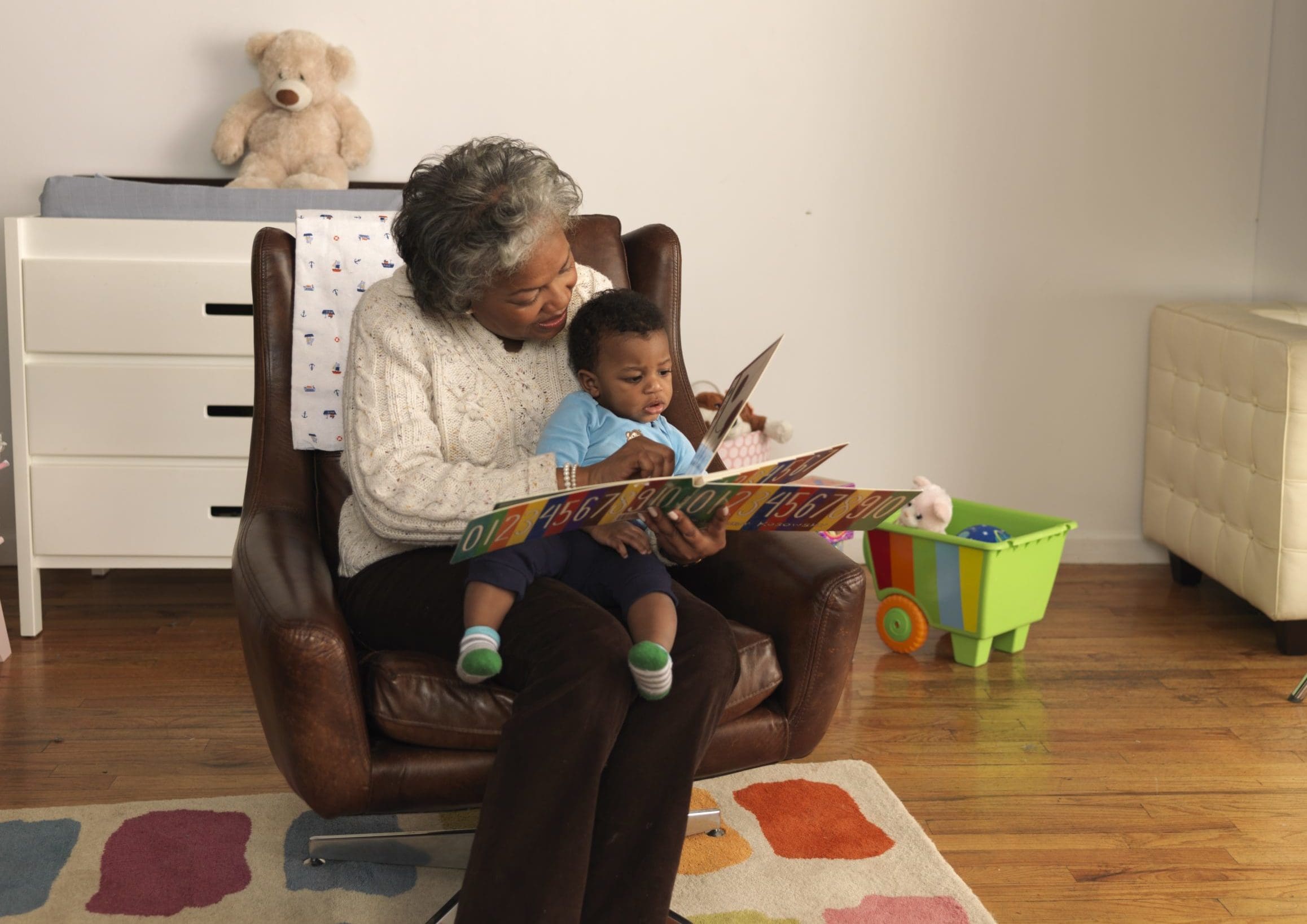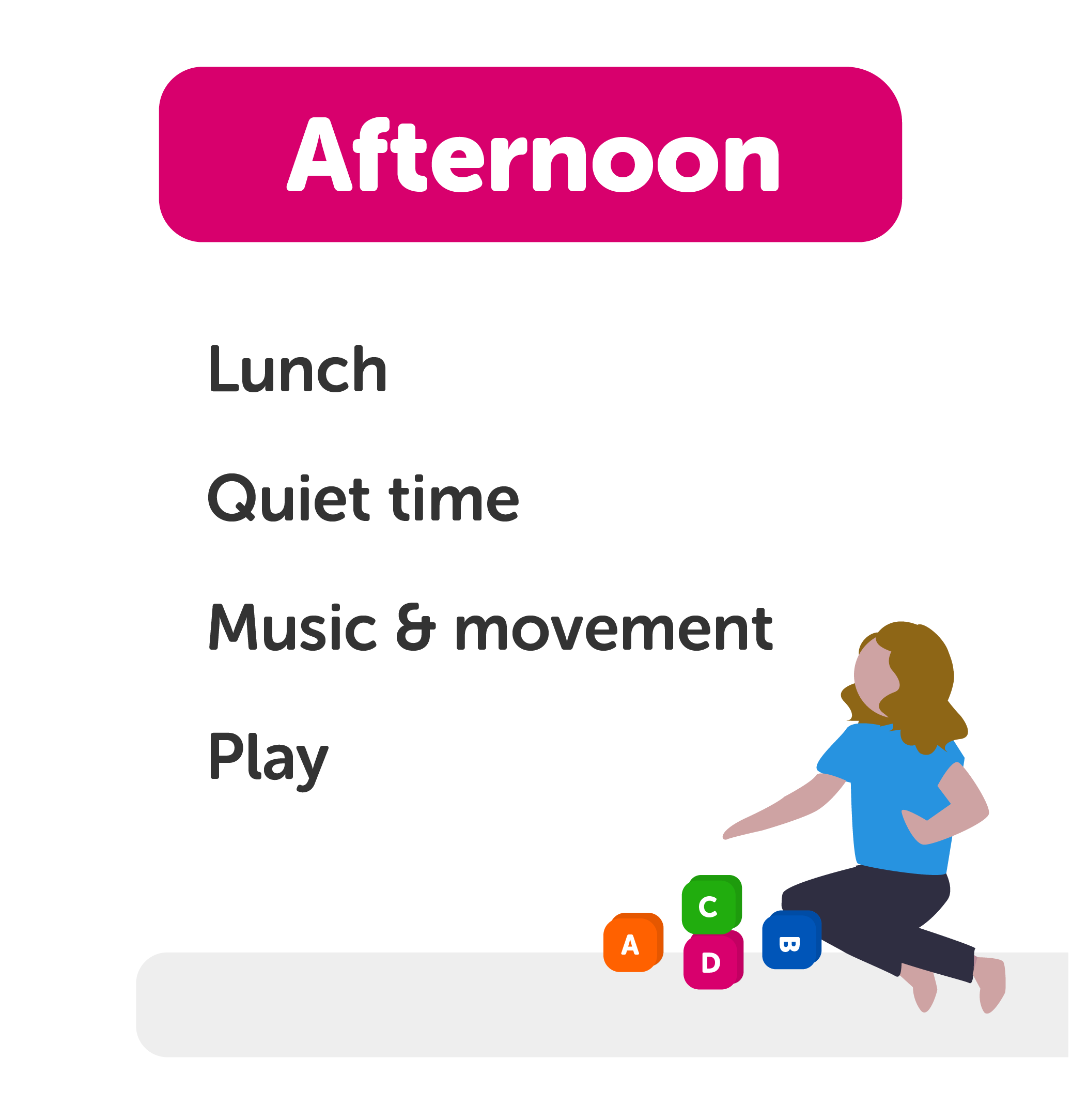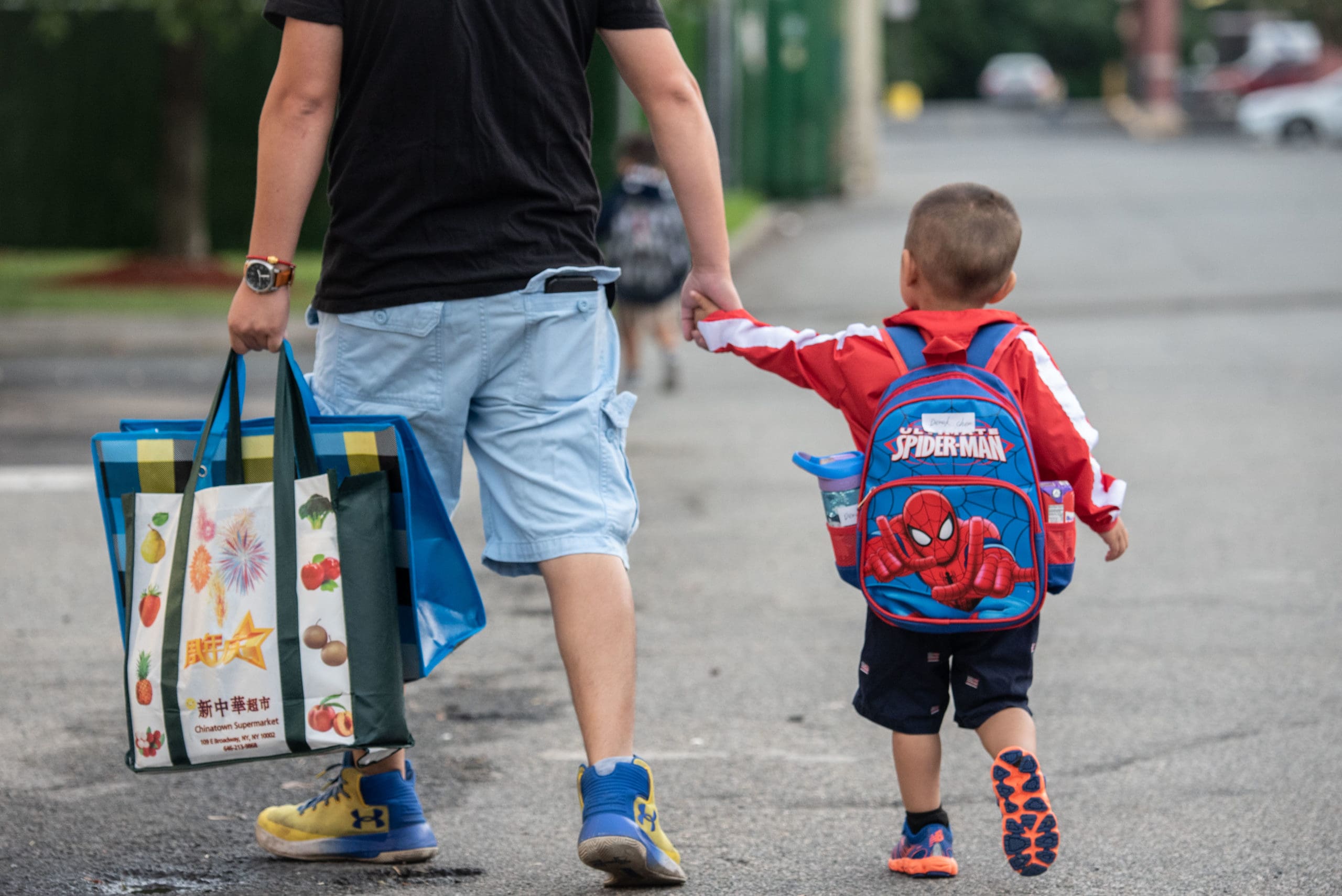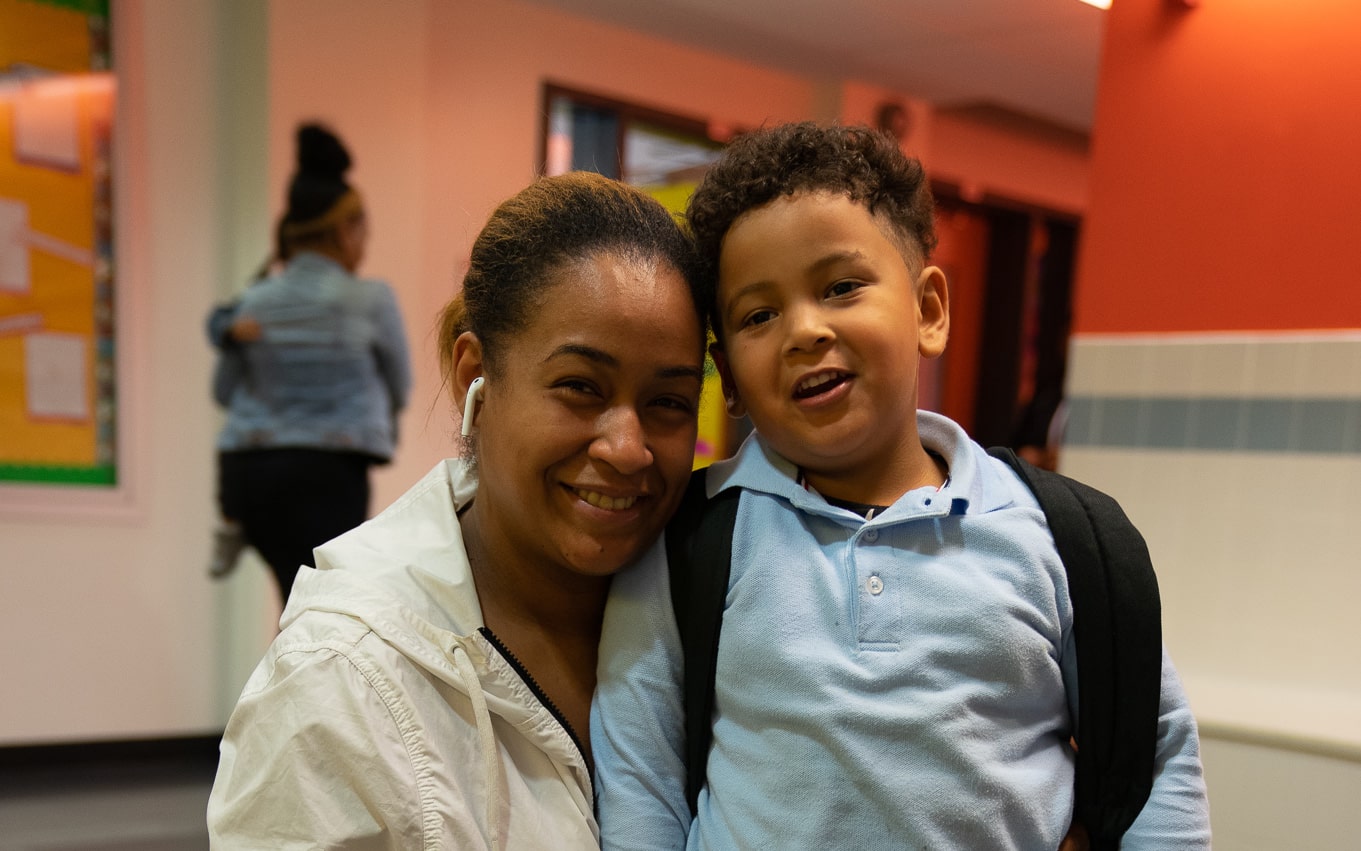 In partnership with the New York City Department of Education
In partnership with the New York City Department of Education
As your child’s first teacher, you have a unique opportunity to help your child grow. But with so many changes, it can be hard to know where to start. We created this page with some of our favorite resources and guidance to help you navigate the overwhelming amount of information out there. Remember, there are no rules during a pandemic! Feel free to lean into what feels best for your family and makes sense for your child. Take it one day at a time, and select a few resources each day to help you adjust to the new normal.
And know that whatever you are doing, you’re doing great!
Keeping daily routines
With some schools reopening for in-person learning, your child’s routines may change. You can help them by following a predictable routine so they feel safe and know what’s expected of them. Routines help you and your child move confidently through the day and encourage positive behavior. At the same time, be flexible and open to your child’s needs. You know your child best! Find a balance of routines and flexibility that works for your family.

Talking to children about routines
Remind your child:
- They are safe
- Where they will be that day
- Who will be taking care of them that day
- When they can expect to see you again
You can also talk with your child about your own routines, and things that may be unexpected. For instance, you might be home more often now, which some children are not used to. Or, if you’re an essential employee, you may see them less right now. Talking openly and honestly about what to expect, and letting your child know that you love and care for them—even if you’re not there—will help them feel safe and secure.
Daily routine considerations
Get started by asking yourself, «What are the things we do every day?» A schedule at home may look like:



Adults thrive on routines, too
Make sure you build in self-care practices everyday, like staying connected with others (even from afar). Routines can provide a sense of security, help reduce anxiety, and build resiliency in adults and children alike!
The 2020–21 school year
This school year, your child may have some days in school and some with learning at home, called “blended learning.” Here are some ideas for supporting them through this different learning model.
Supporting your child with blended learning
Blended learning is when a child has some days in school and some days where the learning happens remotely. Here are key ways to support your child with blended learning:
- Create a regular routine.
- Create a visual schedule for school and home.
- Play with your child to support their learning in your home language and during everyday activities (like bath time, cooking, or laundry).
- Describe what your child is doing and ask them questions, such as “I see you are stacking the boxes. I wonder what will happen if I put one more box on top?”
- Build on their program learning at home, when possible. For example, if the class is working on “What is in my community?” take a walk through your neighborhood and talk about what you see.
- Share what you’re doing at home with your child’s teaching team.
For more ideas, check out this new resource, Supporting Your Child with Blended Learning.
More information
Check out these resources for tips on talking to kids about the pandemic and the school year:
- Social Story on Speaking with Young Children about School Closure
- Talking With Children: Tips for Caregivers, Parents, and Teachers During Infectious Disease Outbreaks
- Find accurate information about the COVID-19 pandemic on NYC.gov
Learn-at-home activities
For young children, everyday living is full of learning. As children play, they are learning about the world around them and practicing important skills. Below are a few of our favorite resources to help your child learn through play. Visit the resources below for learn-at-home support, or search through virtual and in-person activities and events.

Learn-at-home resources
Early Childhood Learn at Home page
A NYC Department of Education (NYCDOE) homepage for families with activity suggestions and resources for infants, toddlers, and children 3–4 years old.
Learn at home
NYCDOE Guide to the Early Intervention to Preschool Transition
A guide to help families become familiar with the transition from Early Intervention to Preschool Special Education.
See the guide
Ready4K
A free resource for helping your child stay on track with their learning goals. To get three texts per week to support your child’s growth, text “NYC” to 70138 or fill out this form.
Sign up for Ready4K
Sesame Street in Communities
Sesame Workshop offers information, videos, and activities in English and Spanish on a wide range of health, literacy, STEM, and other topics.
Visit Sesame Workshop
Sparkler
An app that offers play-based learning activities you can do with your child. Download the app for free from the App Store or Google Play, and use code 2-1-2-1 when you sign up to get access to Sparkler for free for 90 days.
Learn about Sparkler
WNET Let’s Learn NYC!
Watch remote learning classes for grades 3K–2 taught by NYCDOE professionals. One-hour lessons include literacy, math, music, movement, science, and social studies.
Watch classes
Vroom
Tips, tools, and 1000+ activities to help you add learning to meal time, bath time, bed time, or anytime. Visit Vroom.org to access the tips, download the app from the App Store or Google Play, or see a selection of tips in our Brain Building section.
Visit Vroom
Spot the Color
![]()
Ask your child, “What color is your shirt today (or pants or dress)” Then ask, “What other things are that color” Add your ideas, too, and make it a back and forth game. See how many things you can think of.
Playing the “Spot the Color” doesn’t just teach your child colors. You’re also giving them the chance to practice focusing on an idea and a task with another person. The ability to focus is very important in life and in school.
Filter all activities by type
Every v{post.days_recurring} thru v{post.date_formatted.end_date}
Anytime v{post.date_formatted.time}
Sorry, there are no events for this category right now. Check again later.
Tips for talking about COVID-19:
Children are hearing about the virus. Feel free to talk with them about it. Not talking about it may actually make them more nervous. Invite your child to share what they know about the coronavirus and how they are feeling.
-
Find out what they know
- Find out what your child already knows before beginning the conversation so that you know where to begin and can correct any misinformation. Ask questions geared to your child's age level. For younger children, you could say, "Have you heard grownups talking about a new sickness (germ) that's going around?"
-
Follow your child’s lead
- Some children may want to spend time talking or even drawing. But if your child does not seem interested or doesn’t ask a lot of questions, that’s OK. They may need time to think about it and come back to you later with their questions.
-
Be direct
- Answer your child’s questions about the virus in a straightforward and factual manner.
-
Be honest about what you know
- If your child asks about something and you don’t know the answer, it’s okay to say, “I’m not sure.” Use the question as a chance to find out together, or let the child know you’ll check into it and come back to them later.
-
Recognize everyone has big feelings
- Your attitude about the coronavirus will impact how your child feels about it. If you remain calm, your child is more likely to remain calm as well.
-
Empower with information
- Empower your child with information about staying safe. You might say, “We can be germ-busters! Germ-busters keep germs away by washing hands and keeping hands to ourselves and away from faces.” Let children know there are a lot of helpers who are working to keep the germs away too, like doctors and nurses.
-
Allow space for feelings
- Give your child space to share their fears. It’s natural for children to worry, “Could I be next? Could that happen to me?” Let your child know they can always come to you for answers or to talk about what scares them.
Guide to NYC reopening
As the number of coronavirus cases in NYC stays low, more businesses are opening. Learn about what that means for you below, or visit the NYC Department of Health website for more. For a list of businesses open in the current phase of reopening, Phase IV, visit the New York State website.

Tips for families as NYC reopens:
-
Schools
- If schools have already opened and an average of 3% or more tests in NYC are positive in a 7-day period, schools will close.
- Many schools are offering students more in-person learning opportunities. Talk with your child’s school to learn about their blended learning model.
- Schools are increasing health and safety measures. Some measures include regular deep cleanings, better air flow, and changing around spaces to ensure physical distancing. All staff and students must wear face coverings, if it's developmentally and medically appropriate for them.
- If a student or teacher is feeling sick, they must stay home. If their symptoms are consistent with COVID-19, they are asked to get tested.
- For more information on health and safety measures, visit NYCDOE’s Return to School 2020 Health and Safety page.
-
Face masks
- New Yorkers must follow social distancing guidelines, including wearing masks or face coverings in crowded public spaces, on public or private transportation, or in for-hire vehicles.
- All children ages two and over who are medically able should wear a face covering. Wearing face coverings may be confusing or scary for young children at first. It's a good idea to take some time to introduce the idea to your child at home to help get them used to it.
- At your child's program, their face covering should cover their nose and mouth, be stored in an air-tight container (like a ziploc sandwich bag) with your child’s name on it, and washed daily with detergent and water.
- If you don't have one, you may be able to get free face coverings in subway station booths or you can make one.
-
Getting together with others
- Stay cautious when you meet up with friends. Avoid indoor activities and stay away from big groups by sticking to a core group of friends and family—your pandemic "social bubble."
- Only play sports and games with others when you can stay 6 feet apart and wear face coverings.
- If you visit a playground, wear a face covering and keep at least six feet between each child not in the same household. Playgrounds are cleaned daily, but play equipment is not sterilized. Please stay home if you or your child feels sick, and wash your hands often, both before and after using play equipment.
Mental health
These are challenging times for adults and children. It’s important to think about how children are feeling, as well as ourselves.

Your child’s emotions
Here are some tips to help your child learn about their emotions:
- Communicate to your child that their feelings are valid.
- Help them begin to understand feeling words, such as happy, sad, frustrated and scared by naming the emotion for them. For example, “It looks like you are excited! I wonder what you are so excited about.”
- Teach them how they can express feelings. Consider saying “It looks like you are feeling really angry. When you feel angry you can push on the wall ” or “It looks like you are feeling sad. When you feel sad you can ask for a hug or get your favorite toy.”
To learn more about feelings, check out these NYCDOE online resources. Use the Fun with Feelings cards to help 4-year-olds identify and talk about feelings at home, and watch the videos «How Can I Use Fun with Feelings?» and Why Is it Important to Learn About Feelings.
Tips for taking care of yourself
When you take time to care for yourself, can take care for your child better. Even a few minutes of «you time» (like taking deep breaths or listening to a song) can help you recharge so that you can be your best. Here are some tips for creating «you time»:
- Listen to music as you’re doing chores around the house
- Set an alarm to remind yourself to pause, take a deep breath, or use a calming meditation app
- Make sure you’re getting enough sleep (when your little one lays down to rest, try to do the same!)
- Take a ten-minute vacation, like soaking your hands in warm water as you’re bathing your child
- Keep a favorite family photo with you to remind you of happy times in hards moments
- Reach out to others when you’re feeling alone—you don’t have to handle these feelings on your own!
Other resources
- Call, text, or chat for free and confidential mental health support with NYC Well
- Learn more about how families can cope during challenging times and how to help kids grieve with Sesame Street in Communities
- Find more COVID-19 support resources and coping strategies

